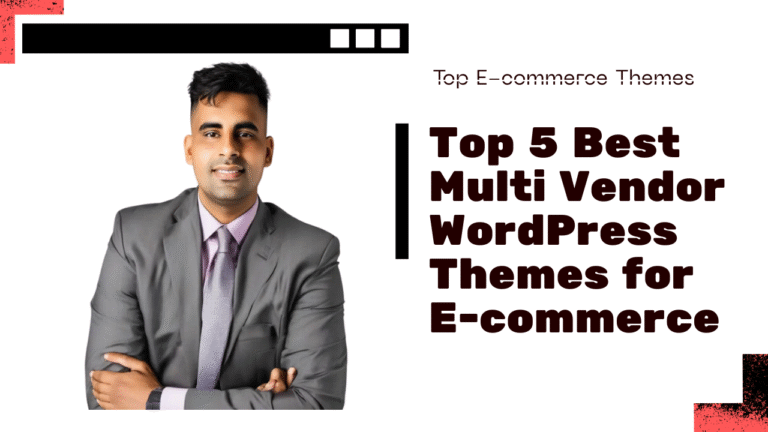It might seem hard to make a website for a business listing if you’re not a developer. But WordPress has made it easier than ever to make one. If you choose the right theme, you can make a list site that looks professional without writing a single line of code. This guide will look at the three best WordPress directory themes that are quick, up-to-date, and simple to use.
This YouTube video is also being used as a step-by-step guide, so you can see what we’re doing as well.
Why It’s Important to Pick the Right Directory Theme
There’s more to an index theme than just how your site looks. It also decides how people use your site, how listings are handled, how quickly it loads, and how simple it is to change things.
This is what a good index theme should have:
- It loads quickly.
- Users’ front-end submission is simple.
- Mobile-friendly layout
- Compatibility with well-known page makers and themes
- Compatibility with listing plugins
- Layout that is clean and modern
- Well-established SEO foundations
- Consistent updates and customer support
- Different types of listings (jobs, events, companies, etc.) can be made.
Every one of the three themes that this article addresses meets these criteria.
Theme #1: ListingPro: An All-in-One Directory Solution
ListingPro is one of the most well-known listing themes for WordPress. It comes with a lot of features that are perfect for directory websites, so you won’t need to add a lot of extra apps.
Important Things
- No need for add-ons from other sites
- Intelligent search using auto-suggestions
- Integrated ad system for monetization.
- System for booking and managing events
- Dashboard for business proprietors and users
- Claim the listing feature for businesses.
- More advanced choices for sorting and filtering
- Form builder for making your own entry forms
Reasons We Like It
This theme is great for people who want a solution with all the features they need. You don’t have to put together different apps to get everything you need: search, reviews, bookings, and payments. A nice dashboard on the front end lets you handle listings, reviews, and user entries.
Performance
It’s well-tuned for SEO and speed. Elementor makes it easy to build, and its mobile style looks great.
Use Case
It works best for big directories like those that list restaurants, services, real estate, or events.
Costing
One-time purchase for $69, which includes lifetime updates and six months of support. Support can be extended to 12 months for an additional $21.38
Theme #2: Listify – A Flexible, Elegant, and Clean Design
Listingify is a lovely theme that puts style first. It doesn’t have as many features built in as ListingPro, but with the right tools, it can be used in a lot of different ways.
Important Things
- Beautiful, clear design
- Adding WooCommerce to paid listings
- It works great with WP Job Manager.
- Support for front-end submissions
- Mobile-friendly and responsive
- Support for bookmarking and geolocation
- Add-ons that let you book appointments
Reasons We Like It
Listify is great for people who want more control over how the site works and feels less bloated. You can use different apps together or separately. It has also been well-researched, and there is a lot of support in the community.
Performance
This theme is small and quick to load, especially if you use tools that cache files. The style is simple, which helps the page load faster.
Use Case
It works great for narrower directories like travel guides, job boards, and local business listings. A simple setting can help you make a beautiful site.
Costing
Sold on ThemeForest for $69 regular license (includes 6 months of support and lifetime updates). You can extend support to 12 months for an additional $21.38.
Theme #3: MyListing – Elementor makes it easy to make changes.
Even though MyListing is a new theme, it’s quickly becoming popular thanks to its sleek design and Elementor-based customization.
Important Things
- Entirely constructed using Elementor
- Better ad type builder
- Search categories that are easy to use
- Options for monetization through sponsored listings
- Search based on location and interaction with Google Maps
- It has its own fields, forms, and processes.
- You can get Ajax search results and fast loading
- A dashboard for users that shows data and messages
Reasons We Like It
You can make different kinds of listings, like job boards, event guides, real estate listings, and more, each with its own fields, groups, and filters. It is easy to use and great for site owners who want full creative power but don’t want to learn how to code.
Performance
The MyListing site is flexible and well-optimized. With the Elementor interface, even people who aren’t developers can easily make their own layouts.
Costing
A premium theme priced at $69 for a regular license on ThemeForest, including lifetime updates and six months of support (support can be extended for an additional ~$21 for a full year).
Tips for Selecting the Appropriate Theme
This is a brief comparison:
| Feature | ListingPro | Listify | MyListing |
|---|---|---|---|
| Built-in Features | ✅✅✅ | ✅ | ✅✅ |
| Customization | ✅ | ✅✅✅ | ✅✅✅✅ |
| Elementor Support | ❌ | Partial | ✅✅✅✅ |
| SEO Optimization | ✅✅✅ | ✅✅ | ✅✅✅✅ |
| Best For | Big directories | Simple/local directories | Creative and niche directories |
Some Advice for Selecting:
- Want everything right out of the box? Make use of ListingPro.
- Want more style options? Listify is the best.
- Want full power and the ability to edit Elementor? MyListing gets it.
- It’s better to use MyListing or ListingPro for SEO and long-term progress.
Here are the steps you need to take to make a directory website.
The video tutorial breaks down the process visually: 🎥 Watch Tutorial Here
But here’s a quick written guide:
1. Set up hosting and install WordPress.
Use a server service you can trust, like Hostinger or SiteGround. You can use your server control panel to add WordPress.
2. Select and Install Your Theme
You can get the theme you want from either ThemeForest or the main site. To turn on, go to Appearance > Themes > Upload.
3. Install the plugins that are recommended.
Some apps will be suggested for each theme. Install them to get the most out of them (for example, WP Job Manager, WooCommerce, Elementor, the list goes on).
4. Personalize using Elementor or theme options
Make changes to your directory filters, ad pages, and home page to fit your niche. You can build your pages visually with the drag-and-drop tool.
5. Add listings.
Start putting in real ads or demos. Make sure that the images, tags, and groups are set up correctly. The theme also comes with sample material that you can add.
6. Establish Monetization (Optional)
You can add ads, charge for listings, or make subscription deals. If you want to make purchases go smoothly, use WooCommerce and payment gateway integrations.
7. Optimize for SEO and speed
Add an SEO tool such as Yoast or Rank Math. To make load times faster, use caching plugins like WP Rocket or LiteSpeed Cache.
8. Test and launch
Check out your site on both phones and computers. Before you let everyone know about it, make sure everything works. Check out how to submit an item for listing, use search options, and check out.
Concluding thoughts
It doesn’t cost a lot of money or take a lot of time to make a great list website. When you use themes like ListingPro, Listify, and MyListing, everything is ready for you to do well. Pick the one that works best for you and then follow the instructions.
Need help setting up your WordPress site?
- Visit: Preet Web Vision
- 📧 Email: [email protected]
- 📞 Phone: +63-9633112000





